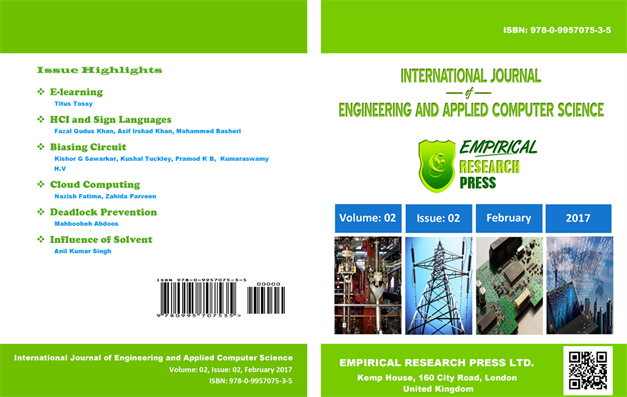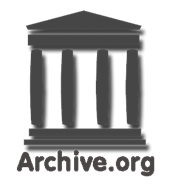



Volume: 02, Issue: 02, February 2017

Content

h-index
6
Titus Tossy
i10-index
4

Impact Factor
T. Tossy, “Measuring the Impacts of E-Learning on Students’ Achievement in Learning Process: An Experience from Tanzanian Public Universities,” International Journal of Engineering and Applied Computer Science, vol. 02, no. 02, pp. 39–46, Feb. 2017. https://doi.org/10.24032/ijeacs/0202/01
2.35
Abstract—This paper is located within the 21st century global debates about the impact of e-learning as one of the ICT on students’ achievements in teaching and learning process in universities. From the perspectives of Tanzania, this paper provides a model for measuring the impact of e-learning on students’ achievements in universities. The rationale for the investigation stems from the notion that despite the hundreds impact studies, the impacts of e-learning on student’s achievements remain difficult to measure and open too much reasonable debate. This raised contradiction and elusive findings on the conclusion based on the impacts of e-learning systems on student’s achievement. A Mixed method research methodology involving survey and interviews was employed in the collection of data for building the model. Multiple regressions technique was used to analyze the hypothesized relationships conceptualized in the research model. The model was built and validated using structural equation modeling and Delphi technique respectively. Measuring e-learning impact on student’s achievements, indicators such as student engagement, student cognitive, performance expectancy, student control, student satisfaction, continue using, student motivation, student self-esteem, student confidence on e-learning system have positive significance relationship with students’ achievement. The model has the potential to policy makers, universities and other stakeholder to understand the impacts of e-learning after implementation in order to justify the total investment based on that technology. The novelty of this research lies in the extension of the findings in literature with constructs such as frequency use and intention to use e-learning in learning context.

Fazal Qudus Khan, Asif Irshad Khan, Mohammed Basheri

F. Q. Khan, A. I. Khan, and M. Basheri, “An HCI Principles based Framework to Support Deaf Community,” International Journal of Engineering and Applied Computer Science, vol. 02, no. 02, pp. 47–59, Feb. 2017. https://doi.org/10.24032/ijeacs/0202/02
Abstract—Sign language is a communication language preferred and used by a deaf person to converse with the common people in the community. Even with the existence of the sign language, there exist a communication gap between the normal and the disable/deaf person. Some solutions such as sensor gloves already are in place to address this problem area of communication, but they are limited and are not covering all parts of the language as required by the deaf person for the ordinary person to understand what is said and wanted? Due to the lack of credibility of the existing solutions for sign language translation, we have proposed a system that aims to assist the deaf people in communicating with the common people of the society and helping, in turn, the disabled people to understand the healthy (normal people) easily. Knowing the needs of the users will help us in focusing on the Human Computer Interaction technologies for deaf people to make it further more a user-friendly and a better alternative to the existing technologies that are in place. The Human Computer Interface (HCI) concept of usability, empirical measurement and simplicity are the key consideration in the development of our system. The proposed Kinect System removes the need for physical contact to operate by using Microsoft Kinect for Windows SDK beta. The result shows that the It has a strong, positive and emotional impact on persons with physical disabilities and their families and friends by giving them the ability to communicate in an easy manner and non-repetitive gestures.

Kishor G Sawarkar, Kushal Tuckley, Pramod K B, Kumaraswamy H.V

K. G. Sawarkar, K. Tuckley, P. K B , and K. H V, “The Approach on Influence of Biasing Circuit in Wideband Low Noise Amplifier to Evaluate Robustness Performance,” International Journal of Engineering and Applied Computer Science, vol. 02, no. 02, pp. 60–68, Feb. 2017.https://doi.org/10.24032/ijeacs/0202/03
Abstract—This proposed work investigates the effects of biasing circuit in the ultra-wideband microwave low noise amplifier which operates between 3GHz to 10GHz. The complete circuit is visualized the importance of every component in the design with respect to linear measurements like Gain, Noise Figure, Return loss under unconditionally stable condition. The design and realization are made by using Hybrid Microwave integrated circuit in AWR microwave office. The thing that is absolutely necessary and frequently the difficult step in the design of an LNA is 'biasing circuit design'. The difficulty situation arises because traditional methods LNA by using S-parameters data files in EDA tools provides almost all linear measurements. Hence a number of time consuming iterations of different biasing circuits with optimization methods may be required to reach targeted specifications with the fixed operating point at the desired points in the load line. Considering this behavior, various alternate biasing circuit schemes are prepared and founded the results associated with it. Furthermore, this paper unmistakably clarifies the impacts of the biasing circuit by utilizing intermodulation and harmonics distortion technique for portrayal characterization. Different cases and sorts of the biasing circuits with various biasing focuses have been tested and given clear perspective of the biasing ideas.

Nazish Fatima, Zahida Parveen

N. Fatima and Z. Parveen, “Cloud Computing Issues and Countermeasures,” International Journal of Engineering and Applied Computer Science, vol. 02, no. 02, pp. 69–74, Feb. 2017. https://doi.org/10.24032/ijeacs/0202/04
Abstract—Cloud computing is an arrangement of Information Technology administrations offered to clients over the web on a leased base. Such administrations empower the associations to scale-up or downsize their in-house establishments. By and large, cloud administrations are given by an outside supplier who has the game plan. Cloud computing has numerous focal points, for example, adaptability, productivity, versatility, combination, and capital lessening. In addition, it gives a progressed virtual space for associations to convey their applications or run their operations. With dismissal to the conceivable advantages of Cloud computing administrations, the associations are hesitant to put resources into Cloud computing chiefly because of security concerns. Security in Cloud computing is an essential and basic angling that upset the development of Cloud computing, and has various issues and issue identified with it. Cloud administration supplier and the cloud administration purchaser ought to ensure that the cloud is sufficiently sheltered from all the outer dangers so that the client does not confront any issue, for example, loss of information or information burglary. There is likewise a probability where a noxious client can infiltrate the cloud by mimicking a real client, along these lines tainting the whole cloud and influences numerous clients who are sharing the contaminated cloud. This paper firstly records the parameters that influence the security of the cloud then it investigates the cloud security issues and issues confronted by cloud administration supplier and cloud administration customer, for example, information, protection, and contaminated application and security issues. It likewise plates a few tips for handling these issues.

Mahboobeh Abdoos

M. Abdoos, “Improved Deadlock Prevention Algorithms in Distributed Systems,” International Journal of Engineering and Applied Computer Science, vol. 02, no. 02, pp. 75–78, Feb. 2017. https://doi.org/10.24032/ijeacs/0202/05
Abstract—Distributed systems deadlock is similar to single-processor system deadlock, but is worse. It is harder to avoid, prevent or detect and is harder to cure, when it is tracked down because all the relevant information is scattered over many machines. In some systems, such as distributed database systems, it can be extremely serious, so it is important to understand how it differs from ordinary deadlock and what can be done about it. Two important deadlock prevention algorithms in distributed systems are wait-die and wound-wait. Their problem is that they just attend to the time stamp of processes, but not priority of them. In a real operating system, attending to priority of processes is very important. The proposed improved algorithms are attending to both priority and time stamp of processes.

A. K. Singh

A. K. Singh, “The Influence of Solvent on the Solvolysis of Ethyl Cinnamate in Water Acetone Mixed Solvent System,” International Journal of Engineering and Applied Computer Science, vol. 02, no. 02, pp. 79–82, Feb. 2017. https://doi.org/10.24032/ijeacs/0202/06
Abstract—The kinetic of alkaline hydrolysis of Ethyl Cinnamate was investigated at different percentage of aqua-organic solvent mixture with Acetone (30 to 70% v/v) over the temperature range of 20o C to 40 o C. The specific rate constant was found to be decreased with increasing proportion of solvent (Acetone) at all the temperature range. The Iso-composition Activation energy (EC) was also evaluated which decreases with solvent composition in (water-Acetone) system. The number of water molecule associated with the activated complex is found to be increase (0.7003to 0.786) in water-Acetone system. The Thermodynamic Activation Parameter such as Enthalpy of Activation (H*), Entropy of Activation (S*) and Gibb's free energy of activation (G*) were also calculated.










